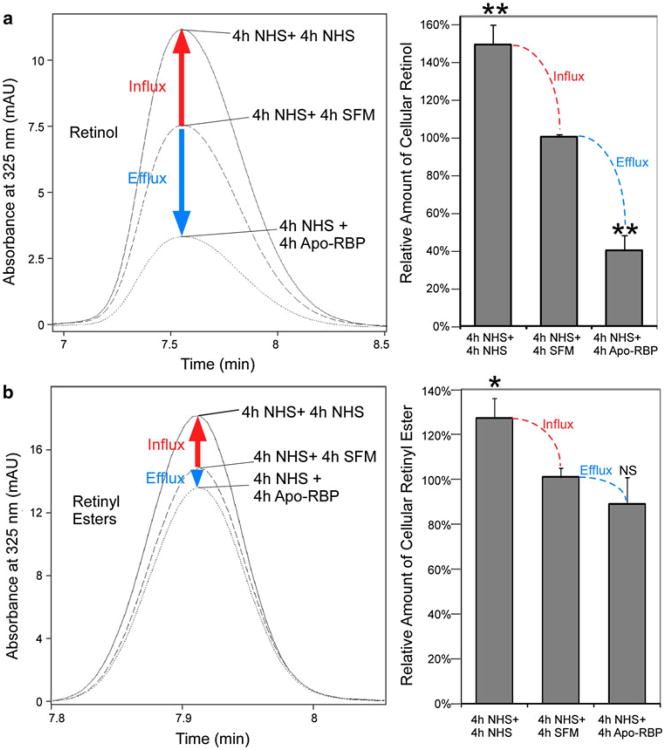Fig. 7.
HPLC analyses demonstrating that STRA6 mediates net vitamin A influx not efflux when exposed to serum. a HPLC assays for retinol efflux from STRA6/CRBP-I cells. After STRA6/CRBP-I cells took up retinol from NHS for 4 h, they are further incubated with SFM, NHS, or 1 μM apo-RBP for another 4 h. Although apo-RBP caused significant retinol loss compared to the SFM control, NHS caused further retinol uptake, not loss. Left representative retinol peaks from the HPLC analyses. Right average data from 3 independent experiments. Statistical significance (n = 3) of the comparison between SFM incubation with apo-RBP incubation (efflux) or with NHS incubation (influx) was determined by Tukey's multiple comparison test (**p < 0.01). The retinol level in the SFM control is defined as 100 %. b HPLC assays for retinol efflux from STRA6/LRAT cells. After STRA6/LRAT cells took up retinol from NHS for 4 h, they are further incubated with SFM, NHS, or 1 μM apo-RBP for another 4 h. Left panel shows representative retinyl ester peaks from the HPLC analyses. Right panel shows the average data from three independent experiments. The level of retinyl ester in the SFM control is defined as 100 %. Statistical significance (n = 3) of the comparison between SFM incubation with apo-RBP incubation (efflux) or with NHS incubation (influx) was determined by Tukey's multiple comparison test (*p < 0.05; NS not significant)

